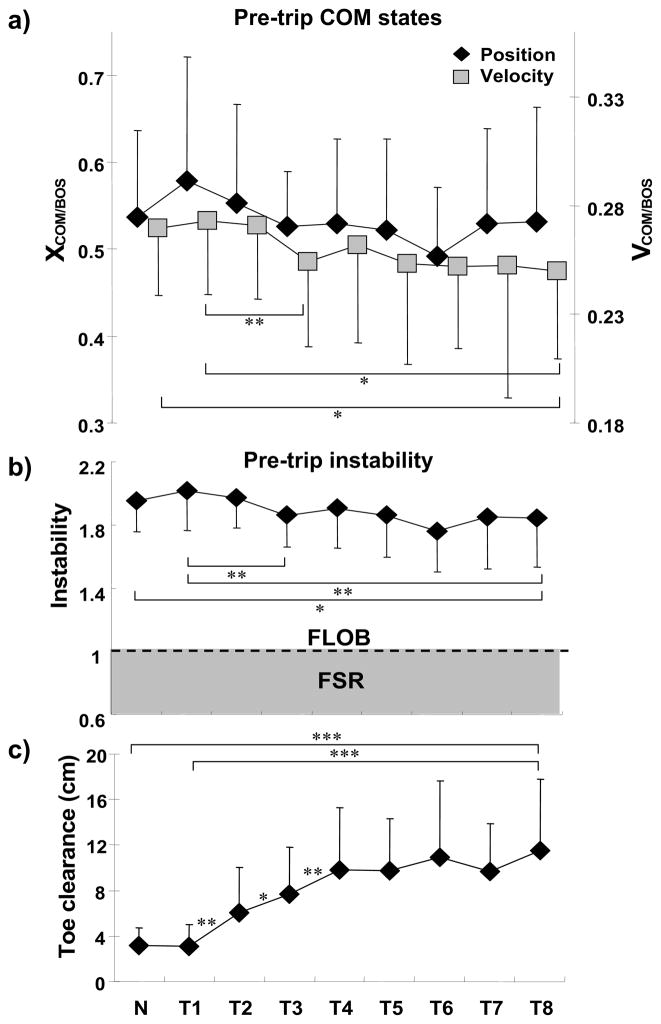Figure 4.
Shown are the group means (±SD) of adaptive changes in a) pre-trip center-of-mass (COM) position and velocity, b) pre-trip instability, and c) toe clearance for the regular walking trial (N) prior to the first trip and all 8 trips (T1–T8). The pre-trip was measured at 30 ms prior to the obstacle-hit. The dash line in figure 4b represents the threshold of the forward loss of balance (FLOB). Stability was defined as the shortest distance between the instantaneous COM motion state and the predicted feasible stability region (FSR) limits for FLOB. A stability value of greater than 1 indicated less stability against FLOB (excessive forward instability); a stability value between 0 and 1 indicated that the COM state was within the FSR (shade). The toe clearance was measured as the vertical distance from the ground to the left toe. * p < 0.05; ** p < 0.01; *** p < 0.001.

